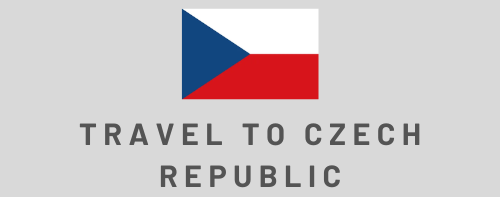The Ultimate Prague Travel Guide
Visit Prague like a local in this ultimate Prague travel guide! The medieval city of Prague is one of the most popular destinations in Europe. Located in the Czech Republic, it has a rich history and is adorning with beauty to look at.
The History of Prague
Founding and Early History: Prague’s history begins around the 9th century when the Prague Castle was founded, though the area was inhabited earlier. By the 10th century, Prague had become an important trading center in Central Europe, situated at the crossroads of ancient trade routes.
Premyslid Dynasty: The city flourished under the reign of the Premyslid dynasty (9th to 14th century), with significant development in culture and education.
Charles IV and the Golden Age: The 14th century is often considered Prague’s Golden Age, especially under the rule of Charles IV from the Luxembourg dynasty, who was Holy Roman Emperor and King of Bohemia. He founded Charles University in Prague in 1348, one of the oldest universities in the world, and had the Charles Bridge built.
Hussite Wars: The early 15th century saw the Hussite Wars, religious conflicts that were significantly influenced by the teachings of Jan Hus, a Czech reformer. Though the wars devastated much of the Czech lands, Prague remained a pivotal center of the movement.
Habsburg Rule: In 1526, the Habsburg dynasty began its rule over Bohemia, marking the start of a long period of Germanization and Catholic dominance. This rule lasted until the end of World War I, with Prague at the heart of several nationalistic and cultural movements during this time.
20th Century and World Wars: Following the collapse of the Austro-Hungarian Empire in 1918, Prague became the capital of the newly formed country of Czechoslovakia. The city went through significant changes, surviving both World Wars with relatively minor damage. The short-lived Czechoslovak Republic saw democracy and prosperity, but was soon overshadowed by the Nazi occupation during World War II, and later by Soviet influence during the Cold War.
Velvet Revolution and Modern Day: The Velvet Revolution of 1989 marked the end of Communist rule in Czechoslovakia, with Prague at the center of these transformative events. Václav Havel, a dissident playwright, became the president of the newly democratic country. On January 1, 1993, after the peaceful dissolution of Czechoslovakia, Prague became the capital of the new Czech Republic.
Today, Prague is a vibrant city known for its stunning architecture, deep cultural roots, and as a significant political, cultural, and economic center for Europe, while also being one of the continent’s most popular tourist destinations.
Places to Stay in Prague
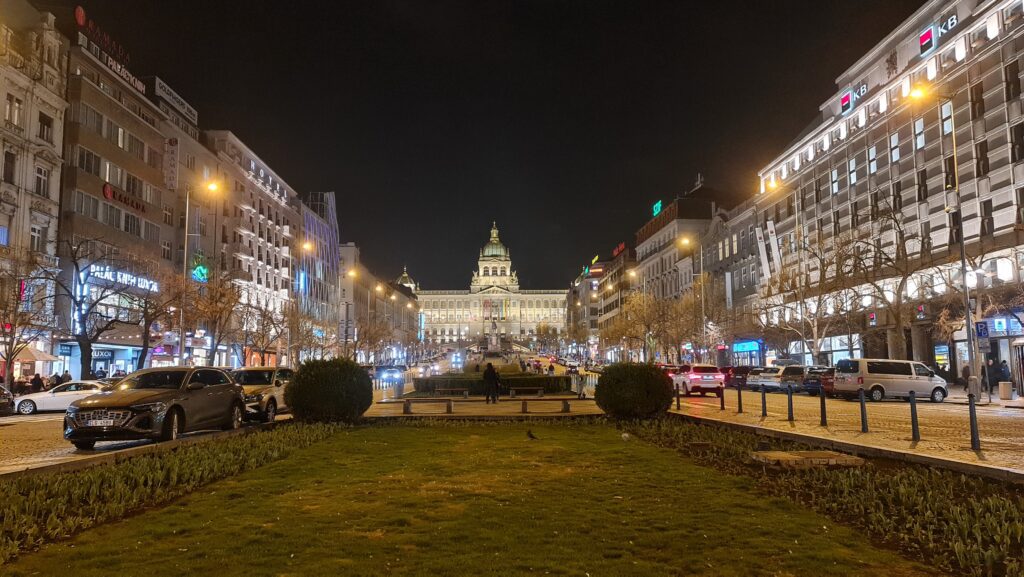
With Prague having a reliable transport system, you can realistically stay anywhere in Prague, however, if you want to be close to the city center, we recommend staying in these areas, all are within walking distance (or a short tram/metro ride):
- Wenceslas Square (Václavské náměstí)
- Old Town (Staré Město)
- Lesser Town (Malá Strana)
- Vinohrady
We recommend booking a three star hotel, as they are perfectly comfortable, clean and very affordable, averaging around $600 USD (14,000 CZK) – $772 USD (18,000 CZK) for 6 nights in the city center during peak season (May-June).
There are several areas we would recommend avoiding due to its general reputation, these are:
- Palmovka
- Libeň
- Žižkov (With the exception of Žižkov Television Tower & surrounding area of Jiřího z Poděbrad & Flora metro station)
Things to do in Prague
There are several great activates to do in and around Prague, whether you’re looking for a simple sightseeing adventure of the beautiful city or to do something more adventurous, we will cover all the best activities to do in Prague.
Old Town Square (Staroměstské náměstí) & Prague Astronomical Clock (Pražský orloj)
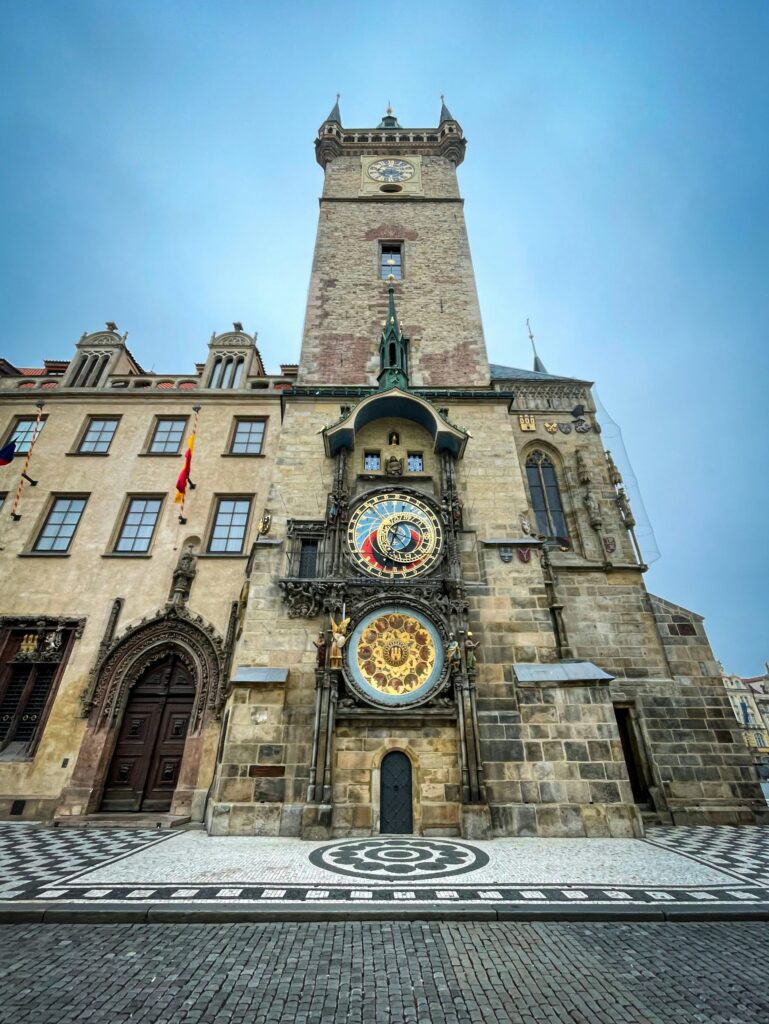
Prague has countless squares and architectural gems, but the oldest and most visited is Old Town Square, which is home to the famous Astronomical Clock.
Old Town Square (Staroměstské náměstí) is one of the oldest squares in Prague and features various landmarks such as the gothic church of Our Lady before Týn, and the Prague Astronomical Clock, which is the worlds third oldest functional astronomical clock.
In addition, Old Town Square features some great statues and memorials, such as the Jan Hus memorial and the Martyrs, which are a set of crosses installed to mark the execution of the 27 bohemian leaders during the Habsburg ruling.
Getting to Old Town Square is simple, with just a short 5 minute walk from the Metro stop Staroměstská or a short walk from the metro stop Můstek.
Prague Castle (Pražský hrad)
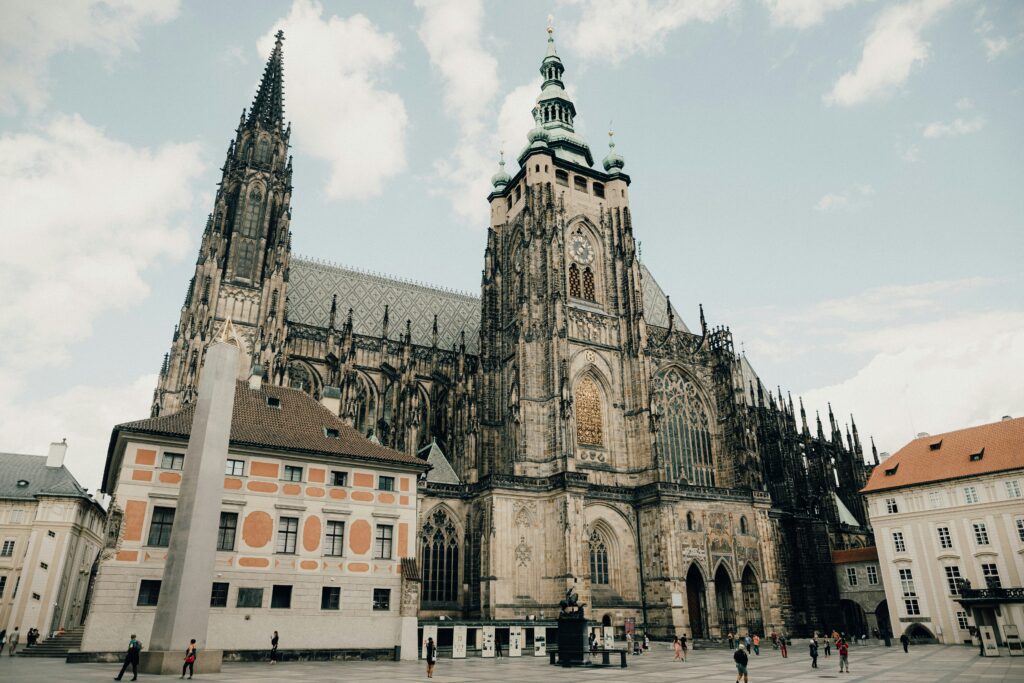
Prague Castle dates back to the year 870, and is home to the president of Czech Republic, it is also a UNESCO world heritage site.
Prague Castle is a castle complex containing multiple churches, golden lane and …
Getting to Prague Castle from Old Town is simple, take the Metro on the A line (from stop Staroměstská or Můstek), exiting at Malostranská and taking the tram 22 up to Prague castle (2 stops).
Charles Bridge (Karlův most)
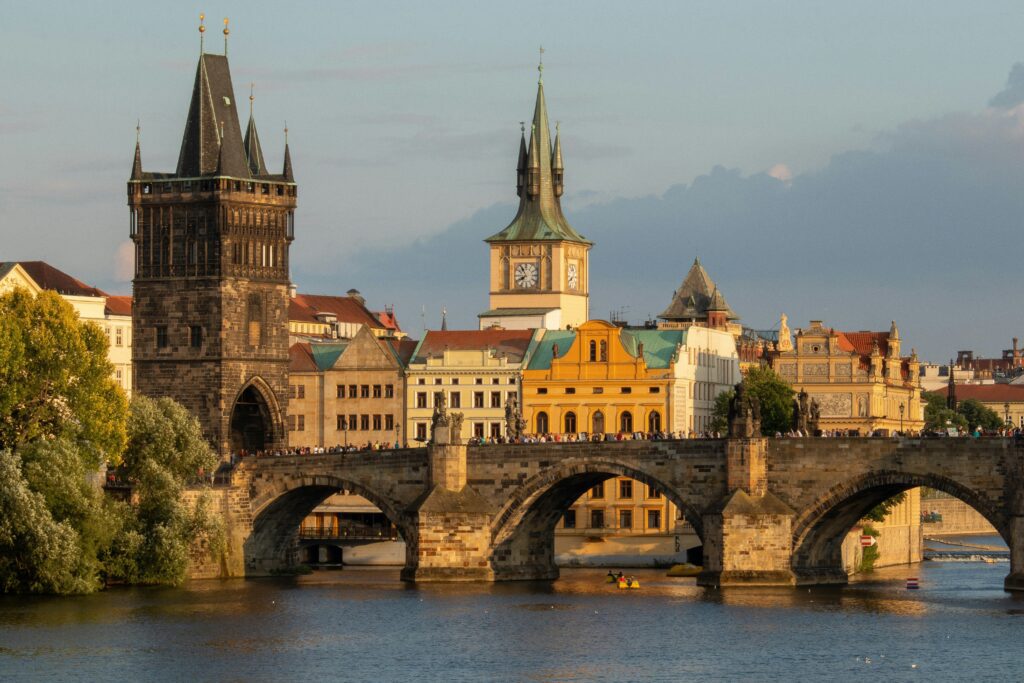
Charles Bridge is a medieval bridge built in the early 15th century, the bridge is 516 meters long and 10 meters wide stone bridge across the Vltava River that connects two popular Prague districts, the Old Town and Lesser Town.
It sees host to millions of tourist per year who walk the bridge into Lesser Town and view all the statues and activities that take place on the bridge.
Getting to Charles Bridge from Old Town is a simple walk in the direction of Staroměstská metro station.
Vyšehrad
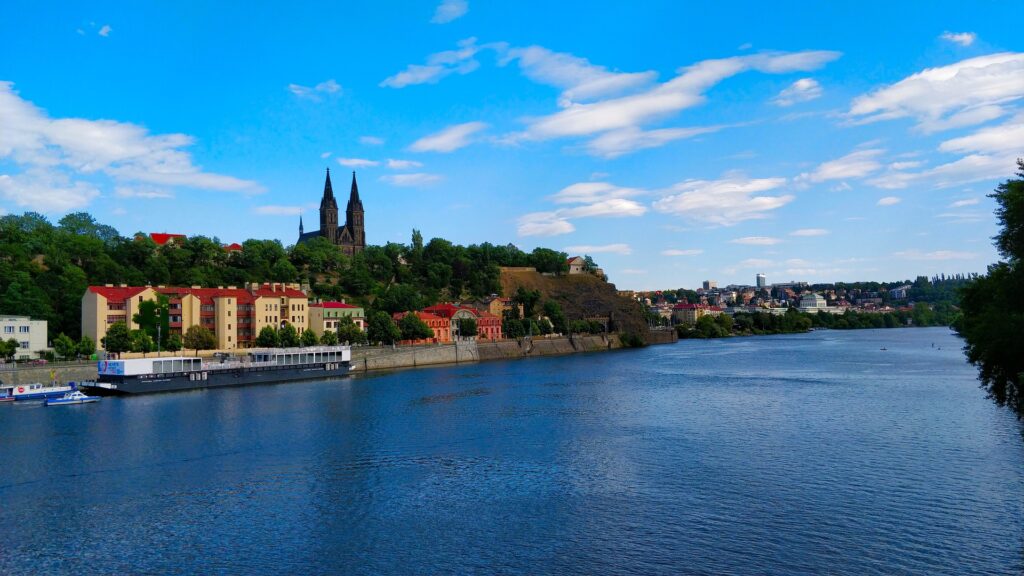
Located on the bank of the Vltava river and houses a castle on the top of the hill, Vyšehrad is a historic fort, it was built around the 10th century. Within the fort, there are various buildings, such as the Basilica of St. Peter and St. Paul and Vyšehrad cemetery, which contains the remains of many focus Czechs, like Alphonse Mucha and Antonín Dvořák.
Getting to Vyšehrad from Old Town, you’ll want to take either the Metro A line from Staroměstská to Muzeum where you’ll change to line C heading in the direction of Háje, where you’ll exit at Vyšehrad metro stop or you can take the tram number 18/27/2/17 from Staroměstská to the stop Výtoň or Albertov.
Petřín Hill
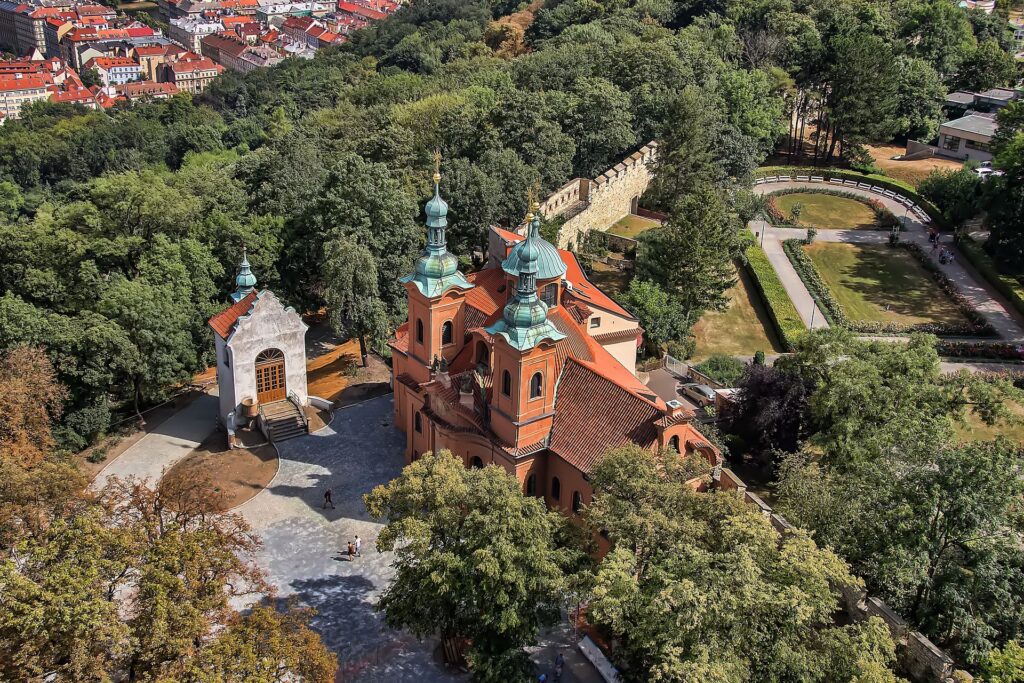
Petřín hill is a large hill covered by parks and is a favourite recreational area by a lot of Czechs, containing the Petřín tower which is a TV tower that provides a beautiful view over Prague and the Petřín funicular, Petřín is a must visit for your travel to Prague.
Getting to Petřín from Old Town is a simple 25 minute walk across the Vltava river, alternatively you can take tram from Malostranská (tram number 12, 15, 22) or from
Národní třída (tram number 9, 22, 23), exiting at stop Újezd.
Prague Zoo

Prague zoo was first opened in 1931 and is considered in the top five best zoo’s by Trip Advisor. Housing around 5000 animals from 676 different species, including 132 species listed as endangered. Prague Zoo is worth a visit, you’ll want to allocate a full day to this activity.
Lesser Town (Malá Strana)
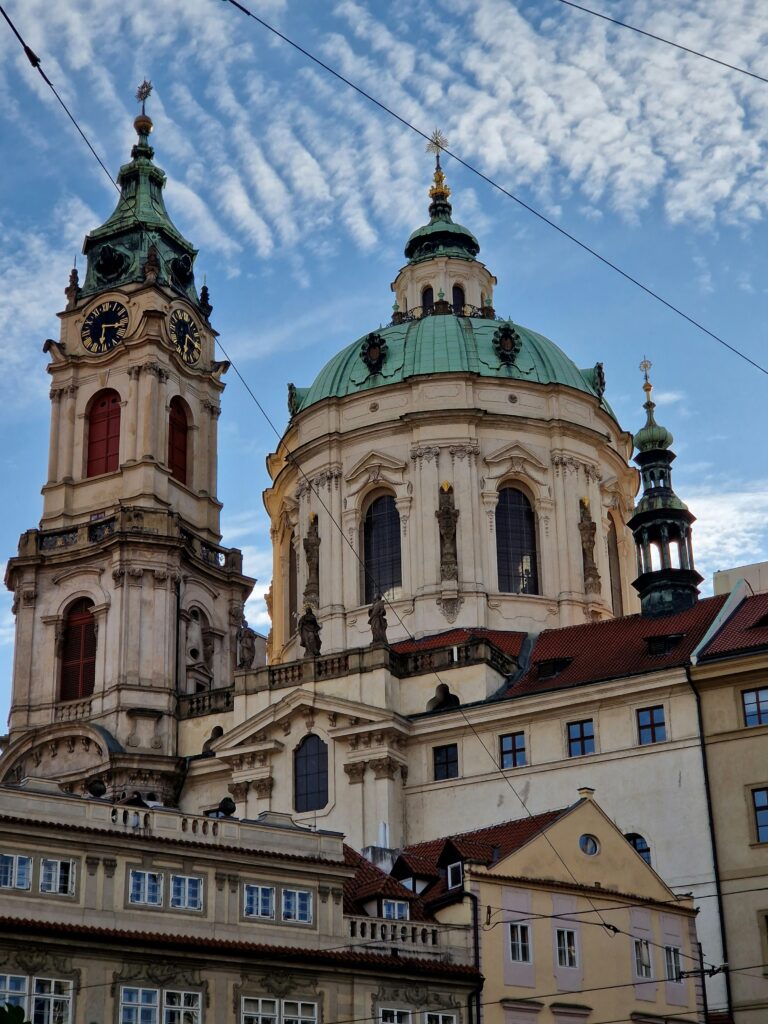
Lesser Town is one of Prague’s most historic neighbourhoods in the city, located beneath the Prague Castle. The neighbourhood is home to the Wallenstein Palace and has the Lennon Wall
Sightseeing Tram 42
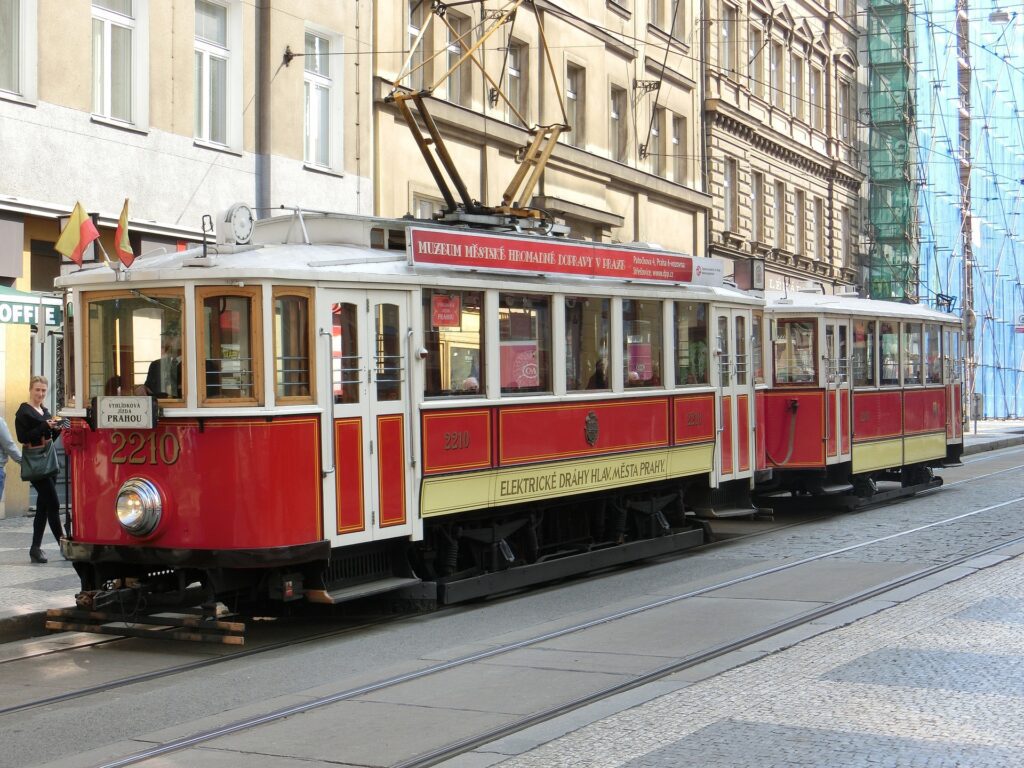
Sightseeing tram 42 is a historical tram line thats in operation today on a special basis, on each weekend and public holiday, tram 42 takes you around the most beautiful and significant stops across Prague, stopping at: Dlabačov – Pohořelec – Brusnice – Pražský hrad – Královský letohrádek – Malostranská – Právnická fakulta – Čechův most – Dlouhá třída – Náměstí Republiky – Masarykovo nádraží – Jindřišská – Václavské náměstí – Vodičkova – Lazarská – Národní třída – Národní divadlo – Újezd – Hellichova – Malostranské náměstí – Malostranská – Královský letohrádek – Pražský hrad – Brusnice – Pohořelec – Dlabačov.
Normal PID tickets are not valid on this tram, and the cost to board is 300 CZK for adults, 150CZK for children and free if your child is under 3 for full day tickets, which are also valid on the special K and Line 41 routes.
How much money do you need to travel to Prague?
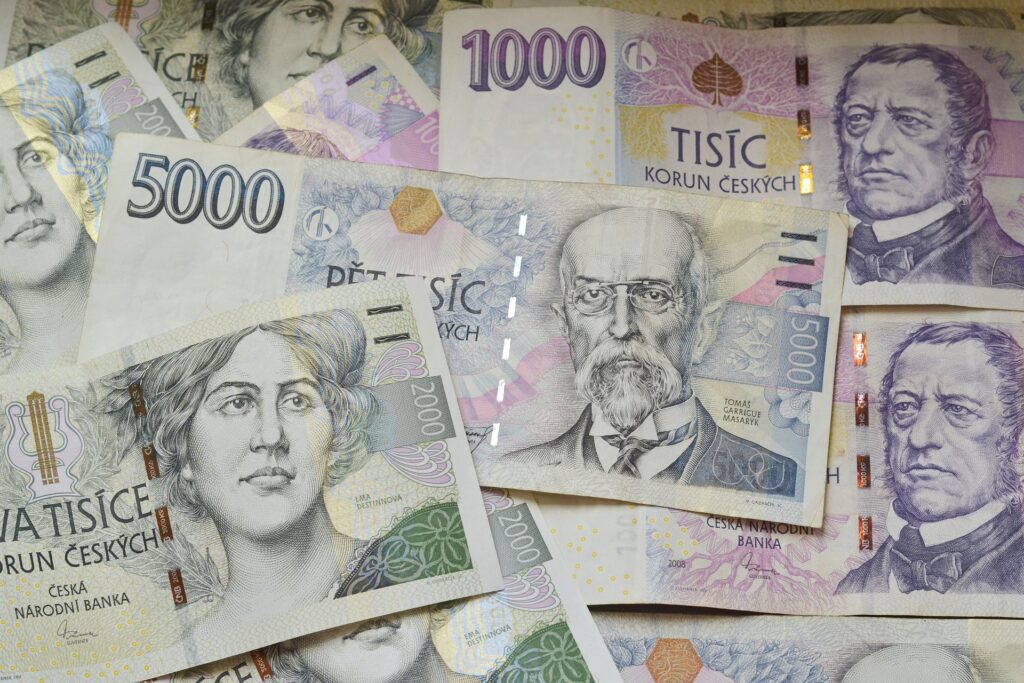
Prague is considered a cheap place to travel to, and that is true! The average cost for a meal here is around $10/per person and transport costs are also extremely affordable, below is the average daily cost broken down here:
- Hotel: 1,500 CZK / $65 USD / £50 GBP per night for a whole apartment or double bedroom in a hotel.
- Food & Drinks: 300 CZK / $13 USD / £10 GBP per person per day.
- Transport: 120 CZK / $5 USD / £3 GBP per person for a 24 hour pass.
- Event and Attractions: 1,000 CZK / $45 USD / £35 per person per day on average.
For an average weekend consisting of 3 nights and a trip for 2 people during peak summer season you’re looking at an average of 13,000 CZK / $550 USD / £420.
Food and Drinks in Prague
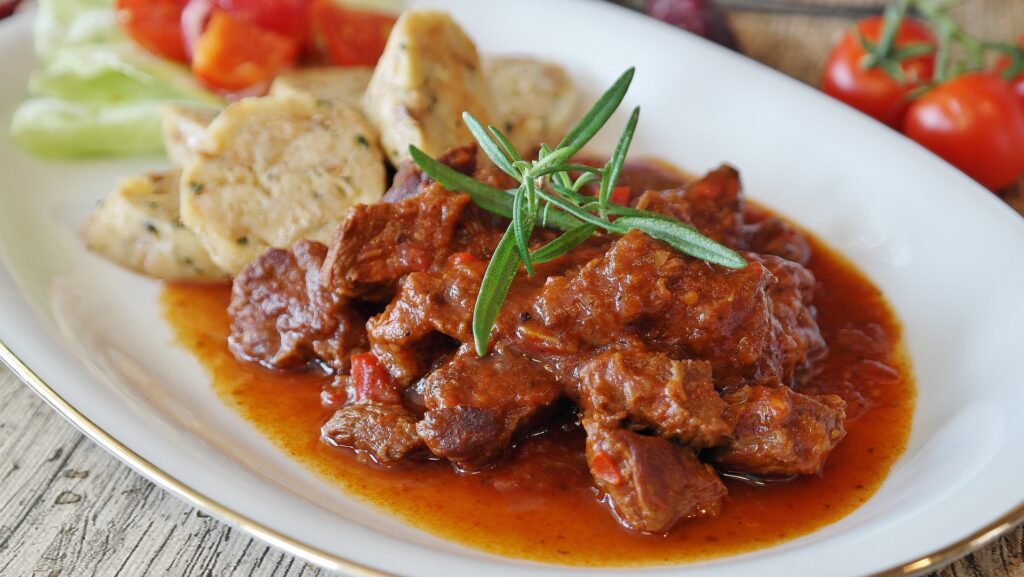
If you’ve never had Czech cuisine before, you’re in for a real treat! Czech cuisine consists of meat, dumplings, soups, sauce and cabbage. Although it doesn’t sound appealing on the surface, it’s absolutely lovely. Some traditional Czech dishes you must try are:
- Svíčková: Svíčková is a much loved dish consisting of a rich creamy sauce, bread dumplings, beef (or venison) and cranberry with lemon.
- Vepřo-knedlo-zelo: Vepřo-knedlo-zelo is a czech dish consisting of roast pork with dumplings and fermented cabbage.
- Obložené chlebíčky: Obložené chlebíčky is a simple but delicious snack consisting of bread with ham, eggs and various spreads.
- Guláš: Guláš is a rich stew made with beef, often accompanied with dumplings.
Arriving in Prague
When you arrive in Prague from the airport, you have several transportation options to get into the city centre from the airport from public transport to private transfers, you can find instructions below for each method.
Public Transport
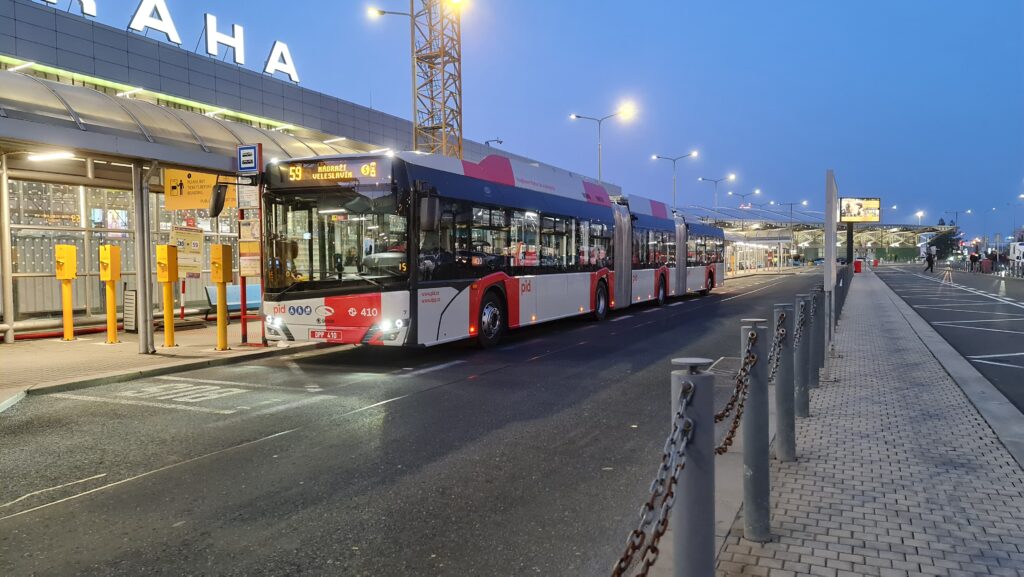
Taking public transport from the airport into the city center is simple and very affordable, from the airport, follow the bus signs to the bus stop. At the bus stop you can purchase and validate your ticket.
At the bus stop, board on Bus 59 to Nádraží Veleslavín, once on board you’ll stay onboard until the stop Nádraží Veleslavín, where you’ll exit to the Metro – A line. Once in the Metro, go in the direction of Depo Hostivař, stay on the metro until the stop Můstek then exit the train and the metro, you’ll then be in Wenceslas Square, the heart of Prague city.
Uber & Bolt
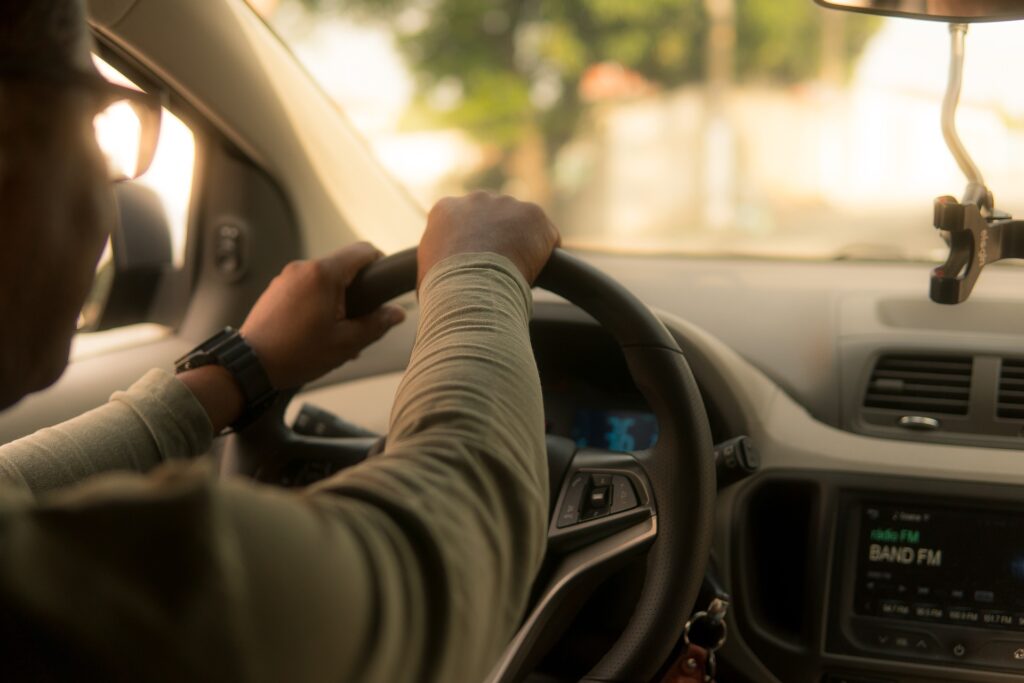
Services like Uber and Bolt are available in Czech Republic, with Uber being the official airport taxi provider. We recommend taking Bolt as it is far more cheaper the average ride cost for Bolt comes in at around 300 CZK, whereas Uber’s comes in at 500 CZK – 600 CZK from the airport to Wenceslas square.
Private Transfers
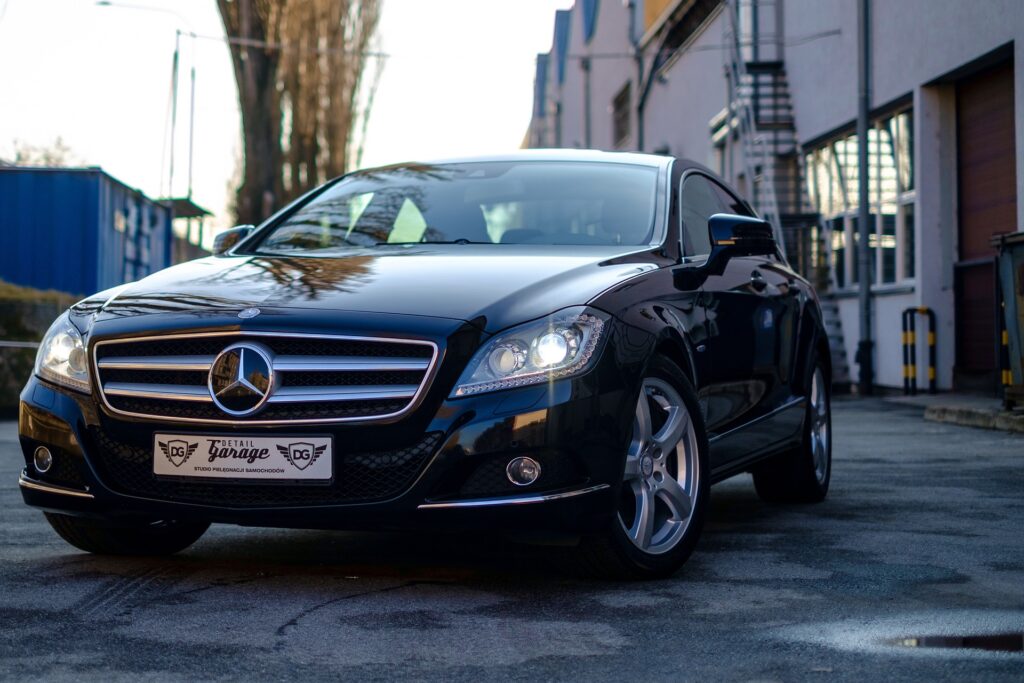
Private transfers are also available from the airport, typically the cost for private transfers are around 600 CZK and must be booked in advance.
Navigating around Prague
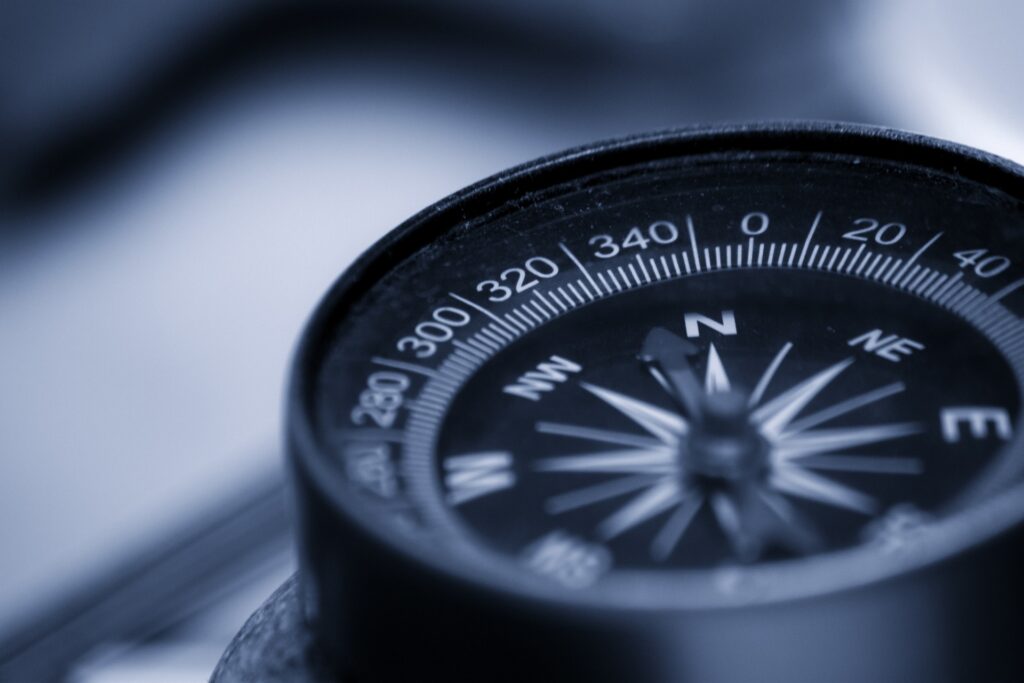
Navigating around Prague is very simple! A lot of the notable landmarks are usually a short walk away from each other.
At some point during your trip you’ll likely need to use the public transport to get to places such as Prague Castle. The common transport methods are trams, with the most notable line being 22 and 23 as they both stop at Prague Castle, along with metro line A and C, Line C stops at notable stops such as the main train station of Prague, Vysehrad and Wenceslas Square (museum stop). Line A features notable stops such as Malostranska and Jiřího z Poděbrad.
There is also an extensive bus network across Prague with very frequent service, it is also often faster than the tram network.
How safe is Prague?
Prague is a safe city for tourists. As with any other tourist destination, it does have petty crimes, such as pickpocketing and scams such as currency exchange scams. But the chances if you being involved in a major crime, such as robbery or worst is next to zero.
Conclusion of the prague travel guide
Wrapping up, Prague is a city that effortlessly combines history, culture, and modern vibes, making it a must-visit European destination. This guide walks you through everything from Prague’s stunning sights like the Prague Castle and Charles Bridge, to practical tips on where to stay, what to eat, and how to get around. Whether you’re here to soak in the medieval atmosphere, enjoy the local cuisine, or simply experience the city’s lively streets, Prague won’t disappoint. It’s affordable, safe, and full of surprises around every corner.
